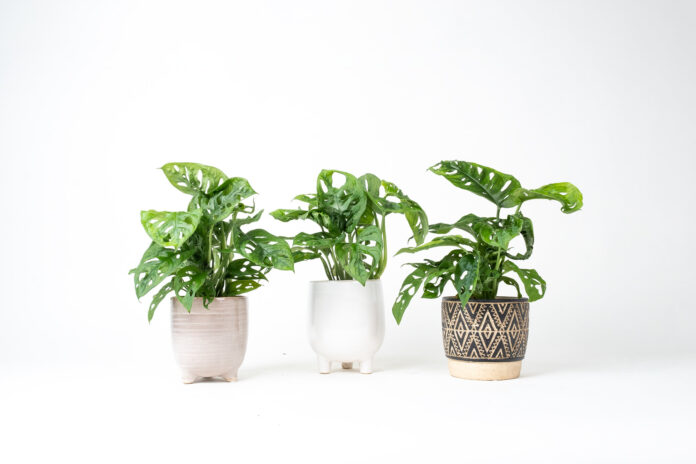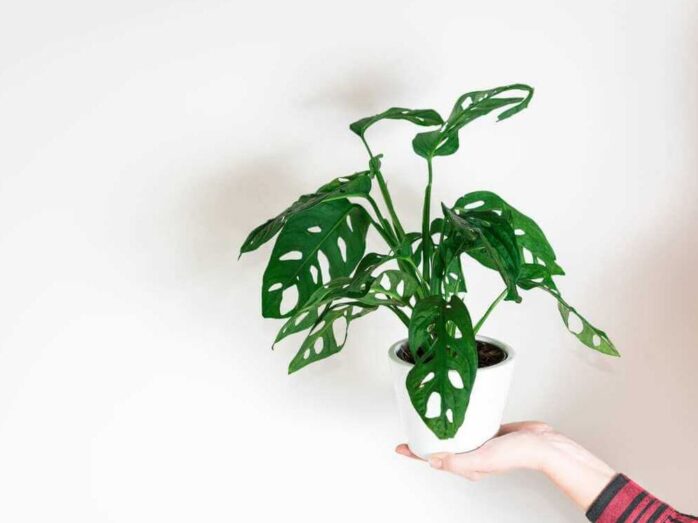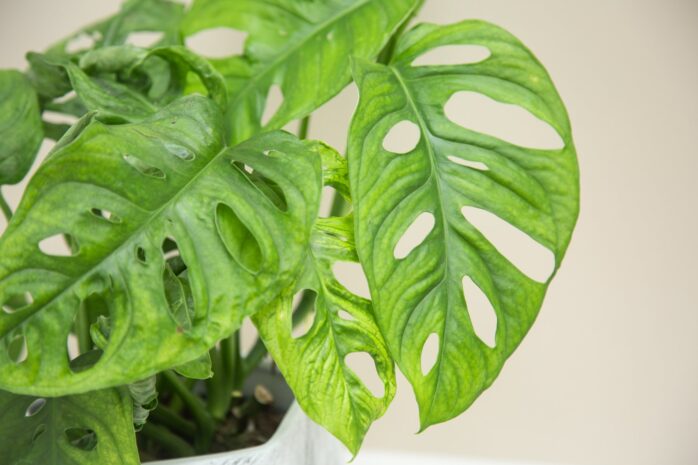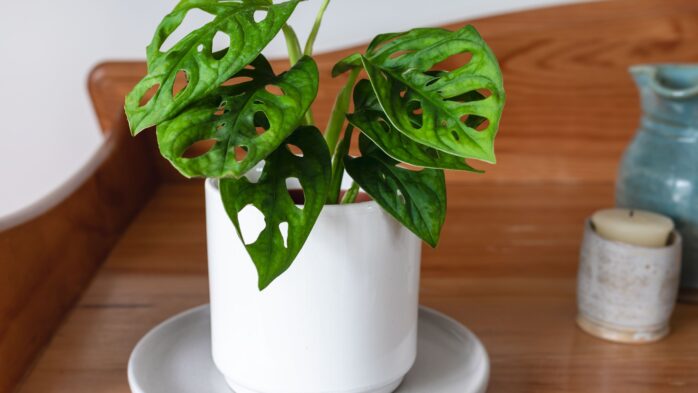
Are you a houseplants lover? If yes, then you’ve probably heard about the Monstera Adansonii. It is also known as the Swiss Cheese Plant. This plant is an excellent choice for those with a bit of space and who wants a remarkable centerpiece at their home.
But worry about the limited space? Do not fret: Monstera Adansonii offers all the Monstera beauty without the massive dimensions. It’s a vine that looks stunning in a pot, and the best part is that you can hang it anywhere.
Monsteras are eye-catching, friendly house plants whose stunning leaves are embellished with dramatic holes. They are vining plants and like to trail across the pot or climb up the trellis or stake. If you already have this Swiss cheese plant or plan to keep this centerpiece, you should know how to care for the Monstera Adansonii plant. Here is the detailed guide:
Swiss Cheese Plant Care Tips

Monstera Adansonii is known to be easy to maintain and likes to climb. It has aerial rootlets extending downwards under the stem braced to the earth or another other support.
It may utilize the roots to push its way up on an adjacent tree or the woody vine when in the wild. If you want to grow it in a pot for your home, You can mimic this by installing support within the pot center.
Giving your plant regular water and food is the primary care responsibility for this plant. There is also the possibility of performing some pruning to ensure that the plant is at the size you want it to be.
Swiss cheese plants are Aroid plants. This plant belongs to Central and South America, growing on tree trunks within broad forests at low elevations. These are also found in a few Caribbean islands.
Light
As this plant grows naturally slowly on trunks of trees, the Swiss Cheese Plant is usually shaded from direct sunlight when in nature.
It isn’t yet adapted to the all-day sun, though darkness is not the perfect choice: You should seek out the brightest, indirect light. Two to three hours of direct sunlight is ideal; however, anything more prolonged or more intense can cause scorching to the leaves.
They can manage low-light conditions when needed, and Monstera Adansonii will develop slower and get a bit sloppy under the conditions. The result is that new leaves expand further and also make for an appearance of a slender plant.
Humidity and Temperature
The wild plants grow in extreme humidity and hot temperatures. The more closely you can replicate the plant’s natural habitat conditions, the more you will be successful. Be sure that your plant is in a location above 40 degrees F and keeps it safe from cold drafts.
Humidity that is above 50% is perfect. A well-lit, warm bathroom is the ideal location to place this plant. If you want to enhance moisture, then spray the plant with water or employ a humidifier inside its room.
Watering
What thing that makes Monstera Adansonii care so attractive is the fact that they can handle being dry. If you’re someone who sometimes forgets to water plants, this plant is for you.
hey prefer to be dry, but it doesn’t mean you are allowed to dry entirely regularly. If the top one or 2 inches has been drained, make sure to give your plants water. You might only have to do this every week or perhaps after, but it’s crucial to learn about your plants.
Fertilizer

Monstera Adansonii doesn’t have a lot of requirements for fertilizers. You can feed it at least once or twice per month in summer and spring and autumn, then cut back on the amount of food you provide them or completely stop in winter.
If you’re looking to provide your plants with an extra boost of nutrients from the start, You can include worm castings in the soil mix or some compost made at home.
Propagating
Since Monstera Adansonii is considered a wild species, it’s relatively easy to reproduce them. If left to run wild, the plants will develop vines between 10-20 meters in length. It means that you’ll need to cut them down regularly not to be a role of a jungle adventurer inside your home!
If you trim the branches, ensure not to discard them. The stems can be cut at the end of the stem, ensuring you have more than two points to get the optimal results. They can be used to grow additional plants or fill the pot for a whole appearance.
Pruning
It is important to note that the Monstera Adansonii can climb, which means it will require being taken care of if it starts to grow out of space. If you want to trim your plant, you should prune it in spring. Utilize sterile pruning shears to reduce stems to less than 25%. Cut just before the leaves node. Also, get rid of broken or dead leaves as required.
Common Issues with Monstera Adansonii

If it is grown in the right conditions, this plant usually does not suffer significant issues. If, however, you’re unable to satisfy its needs for environmental protection indoors, the plant is susceptible to common problems.
Leaves turning yellow
The leaves’ yellowing usually occurs due to excessive watering. Be sure that your plant is not sitting in waterlogged soil. Also, let it dry between the waterings.
Leaves turning black
Leaves with black spots could be an indication of burning caused by straight sunlight. Keep an eye on the plant during the day to ensure that direct sunlight doesn’t stay on it for long. Mainly, make sure you shield your plant from the intense midday sunlight.
Precautions
Monsteras contains insoluble calcium oxalates, and it can be a nuisance to pets, cats, and humans when they consume foliage. It is best to keep your houseplants out of the reach of pets and children.
Bottomline
When we discuss Monstera AdansoniiMonstera AdansoniiMonstera AdansoniiMonstera Adansonii and their correct maintenance, we’ll need to be aware of certain aspects.
All of them are included in our analysis of Monstera Adansonii, a plant with holes that we are all happy to keep in our tiny backyard jungles. We hope these tips will work for you and make your masterpiece healthier than ever.






